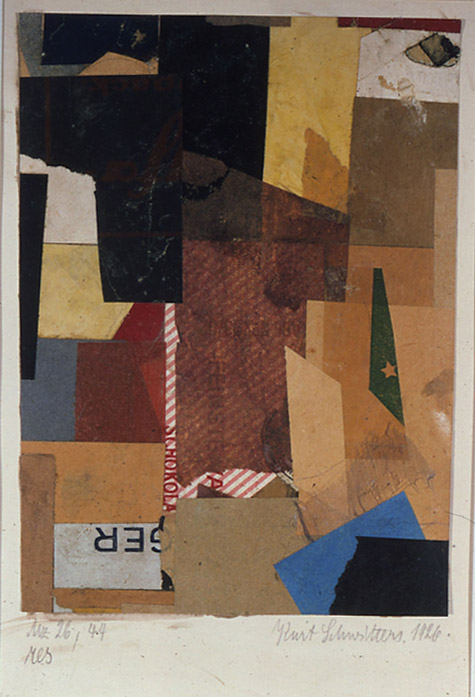
LIFE’S WORK “Merz 26, 44 res,” by Kurt Schwitters, 1926, collage on paper, 6 3/8 x 4 5/8 inches. |
"Collage: Piecing it Together" at the Portland Museum of Art is a somewhat rambling look at a process that came into use in the beginning of the 20th century as a cubist process bringing images, colors, and shapes together that were previously used elsewhere. The museum is stretching the traditional use of the term a bit to include any work that has something glued onto it, and the results are somewhat mixed.
Collage evolved as an intimate form, where an idea could be brought into being quickly and without much fuss. And it is the smaller works in this show that seem the most resonant. I overheard a conversation at the museum between a woman and a boy who were looking at a piece with the observation that it must be "hard to cut these pieces of paper out," which it is not. The hard part is knowing where to put them so it counts.
Anne Ryan (1889-1954) had been a member of the New York avant-garde in the 1940s when she encountered the collages of Kurt Schwitters and took that method as her primary form. Her two small pieces here are, by themselves, worth a trip to the museum. Ryan had a way of putting things together with an admixture of delicacy and strength that give her work sparkling resonance. I had seen these pieces some while ago in a different context and came to see if they were as good as I remembered. They are.
Kurt Schwitters (1887-1948) made collage his life's work, building his "Merz" installations by gathering odd bits of everything and sticking them together in a way that has become, in latter days, an entire art industry. What Ryan saw in his work is the intensity of the simple relationships he made with color, edges, textures, and words. The two small Schwitters collages here have his characteristic feeling of something here but not here, as if implying a greater universe that can't be seen directly.
And speaking of universes, Joseph Cornell could make an entire little world in a box. The double-sided collage shown here, "Images From a Penny Arcade" seems to be about something other than amusements. It will stop you in your tracks, if you're paying attention.
The larger works in this show seem to fare less well, perhaps because one's attention gets calibrated by the focused scale of the smaller pieces. Tom Paiement's big work is a stew of techniques and images that pile together in a way that is admirable for its ambition, but in this context doesn't seem to cohere. It calls to mind those unfortunate murals that are assembled by a community group, each person contributing their own bit but not adding up to a whole.
Aaron Stephan likes to build portraits of figures canonized by the art world into his work, and here depicts two, the late German conceptual artist Joseph Beuys and, from a totally different world view, the Dalai Lama. Stephan builds his images from small bits cut from an anatomy book, recalling the way that Chuck Close learned to paint after being paralyzed. It brings to mind the New Yorker critic Peter Schjeldahl's observation, writing about a recent show of influential art made in 1969, that art had been steered into "mazes of self-reference that it has not escaped to this day."